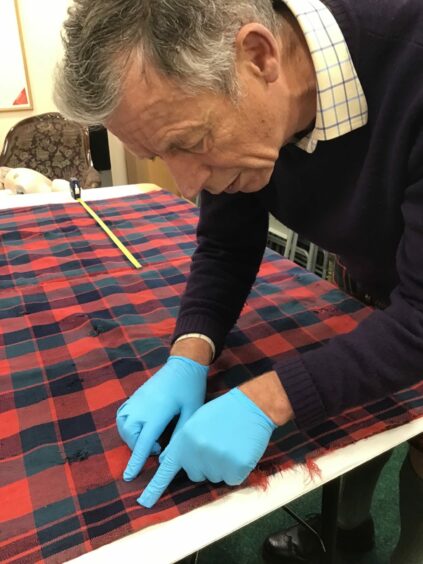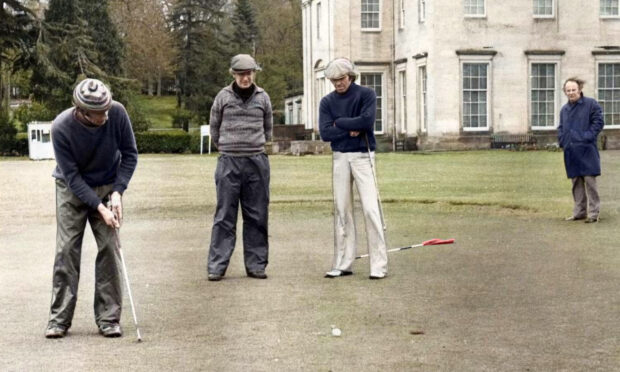
An unassuming piece of plaid donated to Glenesk Museum in the 1950s has turned out to have quite a history.
Fascinating facts about the fabric came to light when Britain’s top tartan historian Peter Macdonald visited the Brechin museum to view the plaid, known to have some age about it.
Word in the museum was that the plaid belonged to one Andrew Birse, who apparently brought the plaid with him when he settled in the glen in 1841, aged 16.
But closer inspection by Mr Macdonald revealed the plaid to be even older, possibly by as much as 70 years, around 1770.
The plaid – in simple red, green and blue tartan – made museum staff wonder if it may have been woven by famous fiddler and composer Niel Gow.
Peter says further research is required before more detail can be revealed about the plaid’s date, pattern and origin.
He’s currently assessing the yarn, dyes and weave, but his strong hunch remains that it was woven in the late 18th century.
“Whatever the date, its vivid colour and minimal fading ranks it well among the rare survivors from the period,” he said.
Glenesk museum staff are planning fundraising for further scientific analysis of the plaid.
Other plaids examined
During Peter’s visit to Glenesk, he looked at a number of other plaids held in the museum.
Among these were a number of tartan and chequered plaids of Victorian fashion, some in Paisley styles, and one very fine Regency silk.
The tartans included two in Black Watch or Government No. 1 sett.
Peter pointed out how the original dyes had faded over time, changing the appearance from what it had originally been.
Dull fabric proved eye-catching
Another length of cloth, at first sight much less interesting, caught Peter’s eye.
After careful scrutiny of the drab and workman-like cloth, Peter came up with a surprising verdict.
It’s likely to be a rare early sample of ‘Hodden grey’ as worn by the Scots Greys.
Peter said: “It’s similar in thickness and weight to cloth used in the past for heavy overcoats, or horse blankets, and has the distinctive diagonal ’twill’ weave.”
For his visit to the museum, Peter wore an old-style box-pleated kilt in an unusual version of Cameron of Erracht tartan, together with a vintage leather hunting sporran.
To everyone’s amazement, he recognised the same tartan being worn as a kilt in the near life-size photographic murals on display in the foyer.
Curator Chris Martin said: “The pictures are from our archive, and form a montage of glen life around 150 years ago.
“This serves to show how the best traditions are never forgotten.
“Glenesk Folk Museum takes great pride and delight in being able to preserve and continue them.”
Milestone for Glenesk Museum
The museum has also passed a milestone in its development by being able to stay open all year.
Longstanding museum trustee and volunteer Maria MacDonell said the museum is making a strong recovery after difficult times.
She said: “In spite of the museum’s significant role in telling important stories of local and global Scottish history since it opened in 1955, by 2019 we were struggling to secure a sustainable future and had to close for a period of soul searching.
“This was followed by Covid, so we rise again.
“The most remarkable and brave thing is that we are staying open all winter Tuesday to Sunday, with a Christmas break.
“This is an astonishing development as the museum has only ever had seasonal opening.”
The museum has raised funds for three new posts, curator, development officer and museum assistant.
Recent funding from Tasagdh has enabled Glenesk musician and composer, Georgina MacDonell Finlayson, to start a research project into a manuscript of fiddle tunes held by the museum.
Maria said: “They were handwritten in the mid 19th century by Duncan Michie grandfather of the museum founder, Greta Michie.
“In the long run this project will bring glen fiddle tunes to life again.”
More like this:
Jacobite heroine Flora MacDonald’s wedding attire painstakingly recreated

















Conversation